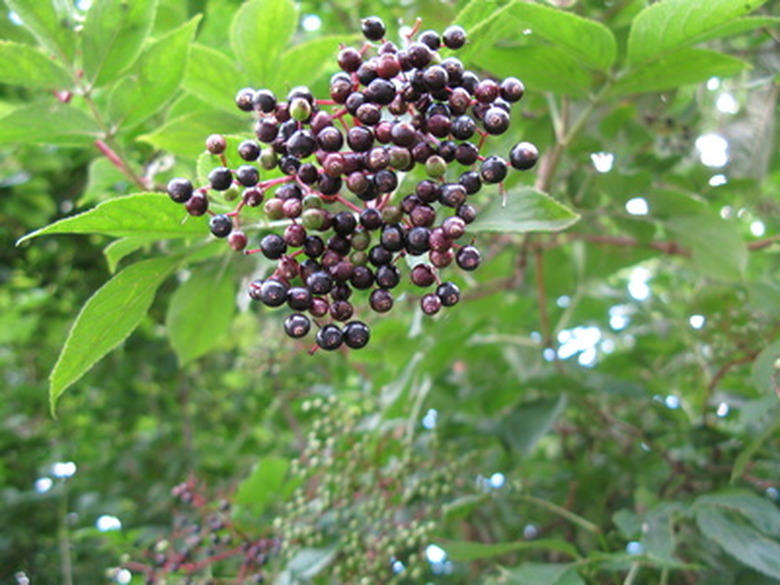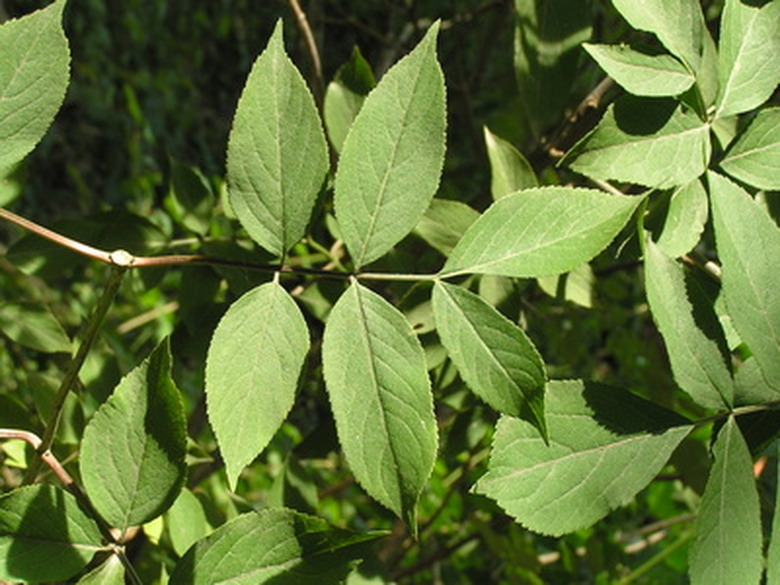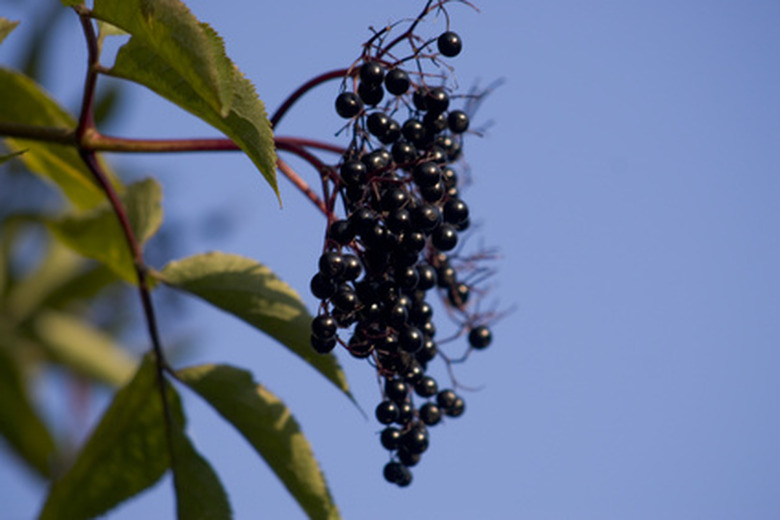Elderberry Identification
The elderberry has a long history in European and American lore; its beauty and usefulness make it sought-after by both landscapers and natural-food lovers. Several species of elderberry grow throughout the United States, but they share enough similarities for even a novice gardener to be able to identify them easily. They also have marked differences between species. Those differences are as important as the similarities, since some species of elderberry are toxic.
Types and Locations
Most consider the elderberry, or Sambucus genus, a member of honeysuckle family. More than 20 varieties of elderberry exist throughout the world, but there are three primary species most gardeners can identify in North America. The American elderberry (Sambucus canadensis) grows throughout much of the eastern United States and Canada, while the blue elderberry (S. cerulean) covers the western third of the continent. The red elderberry (S. racemosa) exists throughout most of the United States and Canada.
- The elderberry has a long history in European and American lore; its beauty and usefulness make it sought-after by both landscapers and natural-food lovers.
- Several species of elderberry grow throughout the United States, but they share enough similarities for even a novice gardener to be able to identify them easily.
Size
The elderberry is considered a large shrub or small tree. Depending on species and environment, it grows from 3 to 20 feet tall. Most species grow up to 12 feet tall with a 5- to 6-foot spread.
Wood
Elderberry species have short or no main trunks. Instead, they have multiple stems usually covered with gray bark, though sometimes the bark is brown or black. The bark is often dotted with raised lenticels, or wart-like bumps, on the surface. Elderberries can also be identified by the twigs, which are stout and soft with a spongy white pith.
- The elderberry is considered a large shrub or small tree.
- Instead, they have multiple stems usually covered with gray bark, though sometimes the bark is brown or black.
Leaves
Elderberries have bright green, 6- to 12-inch long compound leaves, which contain an odd number of leaflets. Most have seven leaflets, but there can be anywhere from five to 11. The 3- to 4-inch leaflets grow in an opposite pattern, with two leaves growing from opposite sides of the same node except for a single leaf at the end of the branch. Elderberries can be identified by "toothed" leaflets, which look serrated along the edges.
Flowers
Elderberries bloom in late spring or early summer. The American and blue elderberries bear tiny, white, fragrant flowers in large, flat clusters that spread up to 8 inches across. The red elderberry also has white blooms, but the clusters are dome-shaped.
- Elderberries have bright green, 6- to 12-inch long compound leaves, which contain an odd number of leaflets.
Fruit
Elderberry fruit is small; each seedy, berry-like fruit is less than 1/4 inch in diameter. The American elderberry bears purple-black or black fruit in flat clusters. The blue elderberry looks similar to the American, but has dark blue or blackish berries covered with white blooms. Red elderberries have red fruit borne in upright, dome-shaped clusters. Elderberries ripen from mid-summer to early fall.
Warning
If identifying elderberries to use as food, avoid red elderberries. According to Virginia Tech University, red elderberries may be toxic when eaten raw, though cooking can remove the toxins. Other experts recommend avoiding even cooked red elderberries. Both American and blue elderberries are safe to consume raw, though cooking improves the flavor.
- Elderberry fruit is small; each seedy, berry-like fruit is less than 1/4 inch in diameter.
- The blue elderberry looks similar to the American, but has dark blue or blackish berries covered with white blooms.
Also steer clear of Hercules' club, a shrub or small tree with compound leaves that look something like the common elderberry. It has flat clusters of poisonous, black berries, often arranged in a ring. However, you can tell them apart because its short, unbranched trunk is thorny, and elderberries are thornless.


